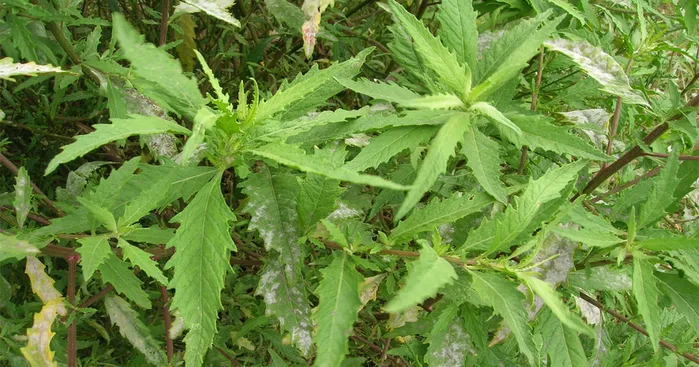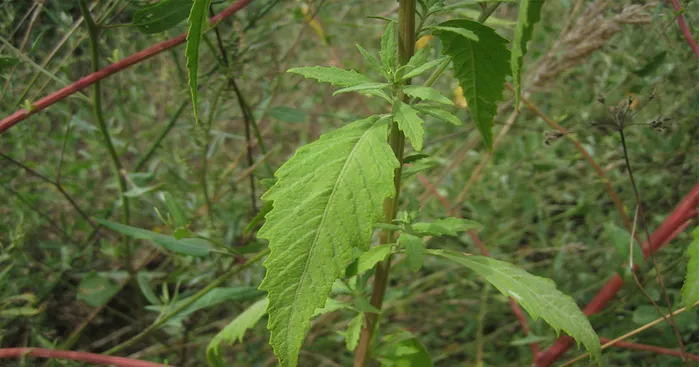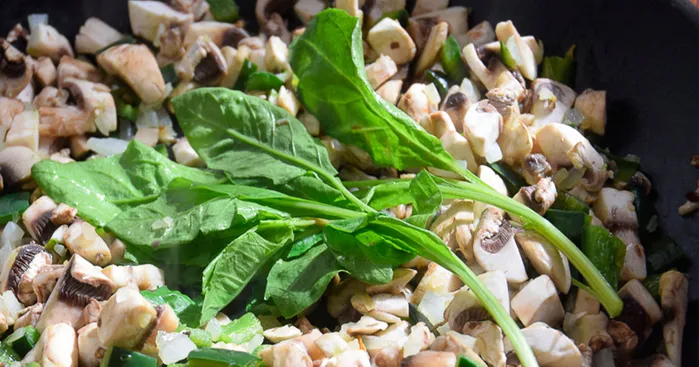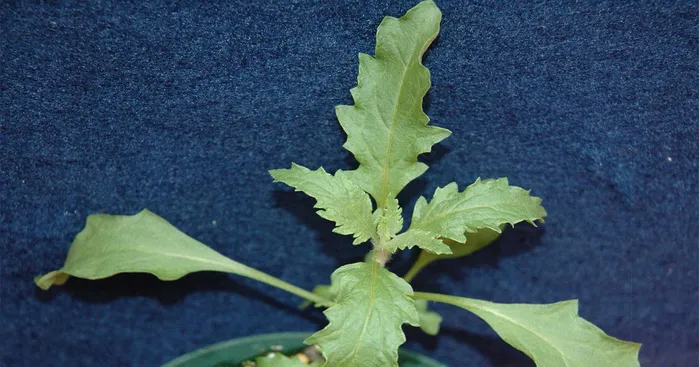Table of Contents

Epazote is a herb that has been used for centuries in Mexican cuisine and traditional medicine.
But what exactly is epazote and what are its benefits?
In this blogpost, we will explore the history, uses, and health effects of this aromatic plant that can add a unique flavor and aroma to your dishes.
Whether you want to spice up your beans, soups, salads, or sauces, this herb can offer you more than just taste.
It can also help you with digestion, parasites, respiratory problems, and more.
Read on to discover the secrets of this herb and how to use it in your cooking and wellness routines.
General facts about epazote:

Overview:
This is an aromatic herb native to Mesoamerica that has been used for medicinal and culinary purposes since pre-Hispanic times.
The name epazote comes from the Nahuatl word epazote, which means “stinky sweat.”
This refers to the plant’s strong, bitter aroma, which can be off-putting to some people.
However, once cooked, the flavor mellows and becomes more complex.
Epazote is a versatile herb that can be used in a variety of dishes.
It is a traditional ingredient in many Mexican dishes, such as beans, quesadillas, and soups.
Also, it is used to flavor other foods, such as eggs, fish, and vegetables.
In addition to its culinary uses, it has also been used for medicinal purposes.
The plant contains compounds that have anti-parasitic, anti-inflammatory, and antioxidant properties.
It has been used to treat a variety of ailments, including intestinal parasites, diarrhea, and stomach cramps.
Epazote is a relatively easy herb to grow.
It can be planted in a garden or a container. Also, it is a hardy plant that can tolerate a variety of conditions.
In addition, it is best to harvest the leaves when they are young and tender.
Epazote is a flavorful and versatile herb that has a long history of use in Mesoamerica.
It is a valuable addition to any kitchen, whether you use it for culinary or medicinal purposes.
Types of epazote:

This herb come in three main varieties: white, green, and purple.
Green epazote is the most popular variety in cooking, and it has a strong, slightly bitter flavor.
Purple epazote is also known as “skunk epazote” because it has a milder flavor and a slightly skunky aroma.
White epazote is very similar in appearance to the green variety, but it has thinner, elongated leaves.
Unfortunately, most varieties are diminishing because Mexican culinary customs have changed, and the typical dishes that call for the use of this herb are no longer prepared as often.
As a result, many people are not familiar with the different varieties of epazote, and they may only be aware of the green variety.
Epazote health benefits:

- Gets rid of worms and other parasites in the gut: One of the most common benefits of epazote is that it can effectively eliminate various kinds of parasites that live in the intestines, such as roundworms and tapeworms.
This property is attributed to its main active compound, ascaridol, which has been proven to be more potent than some antiparasitic drugs, such as albendazole.
- Strengthens the immune system: According to studies on animals, the use of epazote extract seems to be able to modulate the production of certain cells that are important for the body’s immunity, such as macrophages and lymphocytes, thus enhancing the immune system.
The combination of epazote leaves with milk is widely used to help treat respiratory diseases such as bronchitis and tuberculosis, due to the union of immune-boosting and expectorant effects these substances have.
- Relieves inflammation: Another frequent use of epazote is in the alleviation of inflammation, especially joint problems such as osteoarthritis.
In addition, the plant also helps reduce the pain of inflammation.
This analgesic action has been observed in the use of the plant’s alcoholic extract, which appears to act on NMDA receptors. - Aids digestion: Although there are no studies confirming this plant’s action on digestion, it is one of the popular uses in which it is most widely used.
Depending on its use, epazote tea can be taken after heavy meals to aid digestion, as it may be able to increase the production of gastric juice. - Lowers blood pressure: In Morocco, epazote is frequently used to help in the treatment of high blood pressure and, according to studies carried out on mice, this property is due to the stimulation of type 2 muscarinic receptors in the heart which slightly slow down the heart rate, as well as relaxing the heart muscle.
- Fights bacterial, viral, and fungal infections: The use of epazote extract and essential oil has demonstrated a powerful antimicrobial action capable of eliminating various types of bacteria, viruses, and fungi.
- Prevents osteoporosis: In some research carried out on laboratory mice, the use of the hydroalcoholic extract of epazote prevented the loss of bone density and can be applied to prevent the onset of osteoporosis, particularly in women nearing menopause.
Other health benefits:
- Antiparasiticperhaps.
- Antiflatulenteliminates gastric gas and stomach upset
- Antispasmodicideal for relieving cramps
- Antiseptickills various germs, heals and disinfects skin wounds
- ConditionerThis plant is also a skin-care ally, moisturizing and softening the skin.
- Expectoranthelps expel mucus
- Analgesicalleviates various types of pain
Precautions before you consume epazote:

Epazote has a toxic active substance called ascaridol, which makes up 70% of its oil and root.
These parts of the plant should never be used because they can cause serious side effects like dizziness, tremors, and bloody vomiting.
The leaves are less toxic, but they can still cause problems if consumed too often.
Eating this herb regularly can lead to colic and diarrhea.
There are other reasons to avoid using or eating epazote.
There is not enough scientific evidence to prove its safety or effectiveness.
No medical authority recommends its use in any form.
It is hard to know the right dose of epazote, whether as a medicine or as a seasoning.
Taking too much can be more harmful than helpful.
Epazote can also worsen some health conditions, such as liver, kidney, and hearing problems.
People with nephritis should be especially careful, as high doses can damage the kidneys and even cause death.
People with heart disease and stomach or intestinal ulcers should also stay away from epazote.
Children under three years old should not use any remedies that contain epazote, because they can be very dangerous.
People up to 12 years old should also limit their consumption of epazote, because of its toxicity.
Pregnant women should not eat this herb, because it can trigger premature labor or harm the baby’s brain development.
Nursing mothers should also avoid epazote because it can affect the baby’s health through breast milk.
Therefore, it is better not to use or eat epazote too much, even if it has some benefits.
It can cause serious harm to our bodies if we do not follow the advice of a specialist.
Using epazote:

Epazote is a Mexican herb that is often used as a condiment and flavoring.
It is best to use it fresh, but it can also be dried.
The leaves can be stored in the refrigerator for 3-4 days.
Epazote has a strong, earthy flavor that is reminiscent of mint, anise, and licorice.
It is often used to flavor beans, esquites (street corn), tamales, tacos, moles de olla, and carnitas.
It is also used in quesadillas and some cheeses.
When using epazote, it is important to add it sparingly.
The herb has a strong flavor that can easily overpower a dish.
It is best to add it at the end of cooking so that its flavor does not dissipate.
If you are new to this herb, you can start by adding a small amount to your vegetable soup or cream.
This is a good way to get a feel for the herb’s flavor and see how you like it.
Here are some additional tips for using epazote:
- Use young, tender leaves for the best flavor.
- If you are using dried epazote, rehydrate it by soaking it in hot water for 10 minutes before using it.
- Pairs well with beans, corn, cheese, and meats.
- Be careful not to add too much epazote, as its strong flavor can easily overpower a dish.
In addition to its culinary uses, it has also been used for centuries for its medicinal properties.
It is a traditional remedy for digestive problems, such as gas, bloating, and diarrhea.
Epazote has also been shown to have antibacterial and antifungal properties.
Today, epazote is still a popular herb in Mexico.
It is used in both traditional and modern cuisine, and it is also still used for medicinal purposes.
If you are looking for a flavorful and versatile herb to add to your cooking, epazote is a great choice.
Buying and storing:

When buying epazote, look for dark green leaves that are free of stains or discoloration.
These leaves should be firm and have a slightly sour smell.
If the leaves are wilted, discolored, or have a strong odor, they should be discarded.
Epazote can be stored in a few different ways.
For short-term storage, you can keep it at room temperature for up to a week.
To do this, place the leaves in a paper towel-lined container and store them in a cool, dark place.
For longer-term storage, you can dry the leaves.
To do this, wash the leaves and pat them dry.
Then, spread them out on a baking sheet and place them in a warm, dry place.
The leaves should be dry within a few days.
Once they are dry, you can store them in an airtight container in a cool, dark place for up to six months.
You can also freeze-dried epazote.
To do this, place the dried leaves in a freezer bag and store them in the freezer. Frozen dried epazote will last for up to a year.
